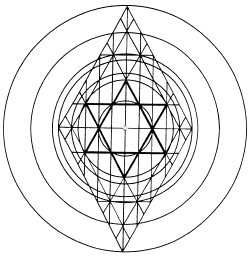Wheels within Wheels

Among believers within
Judaism, Christianity, and Islam, it is generally believed that the
writings are historical documents, and that much of what is written has
contextual value for those who are learning of God’s ways, but that the
narratives that began with Adam and reach their zenith in the words of
the prophets; that began with the genealogy of a man from Galilee, whose
words are essentially sealed by the writings of his disciples; that the
writings of Mohammed speak to the future of the faith but pertain to his
time on Earth, and that his assertion that all Muslims are bound to the
Hebrew and Greek canons has narrow application.
The book of Revelation
is an anomaly of sorts, because it reworks what seems to have passed and
leapfrogs into these and imminently approaching times. The scriptures
depict wheels within wheels, and if translation is faithful to the
Spirit that drove its authors to write, it is not possible to defend
what is written in one place without affirming its relevance to what is
written in every place. Paul and others hinted at this, when saying such
things as the first Adam was a type of the second, and that Eve was a
type of the church.
Don’t get me wrong.
There is nothing in the received text that I don’t treasure. Further,
without the protective invention of the Ezra script during the
Babylonian captivity; without the blueprint of the careful work of the
Masoretes in applying the Oral Tradition to what is written, all of us
would have been clueless about Torah and the writings it engendered, the
Greek scriptures and the Holy Quran included. We would be asea within
the lively oracles of God without a rudder.
We find ourselves, in
this late day, on the verge of the restoration of all things: a time
when seals are to be broken. Many pertain to the end of this age; but of
those which point to the future, none is more important than the seal
upon the Hebrew scriptures. That seal has been broken: once again, Torah
is available as a lively oracle, as first delivered to Yisroel by Moshe
from Saini and developed within his tent with the guidance of Yahushua,
and the assistance of lowly Hosea, who was renamed Y’shua, for he would
lead in the battle of Yircho and set foot beyond Yardan.
Y’shua led a nation state, but he was met by the angel Yahushua, who
proclaimed, in answer to the question of whether he was friend or foe,
“Nay, but as captain of the Hosts of HaShem have I come.” In this
meeting before Yircho is pictured the mystery of Matthew 1:1 and 1:16,
except the figure of Hosea is not only renamed, but born again: the
first of many brethren.
The lively oracles of
HaShem YHWH are being restored in our
day. Torah and the Hebrew canon are again available in Sinaitic Hebrew,
a language of pictographic emblems that answer to the question in the
mind of the reader, but only by the Holy Spirit. The intellect can make
dry runs at working out what is written, and that is quite useful so
long as the reader is clinging to the received text and its translations
into the languages of the world; for the oracles support what is
received. However, the original emblems break the seal, in preparation
for the words, “I will magnify Torah and make it glorious.” Torah is not
one story. It is story upon story upon story, all turning around the
same hub, the same cornerstone, the Word of HaShem; and eternity will
fill with its ramifications.